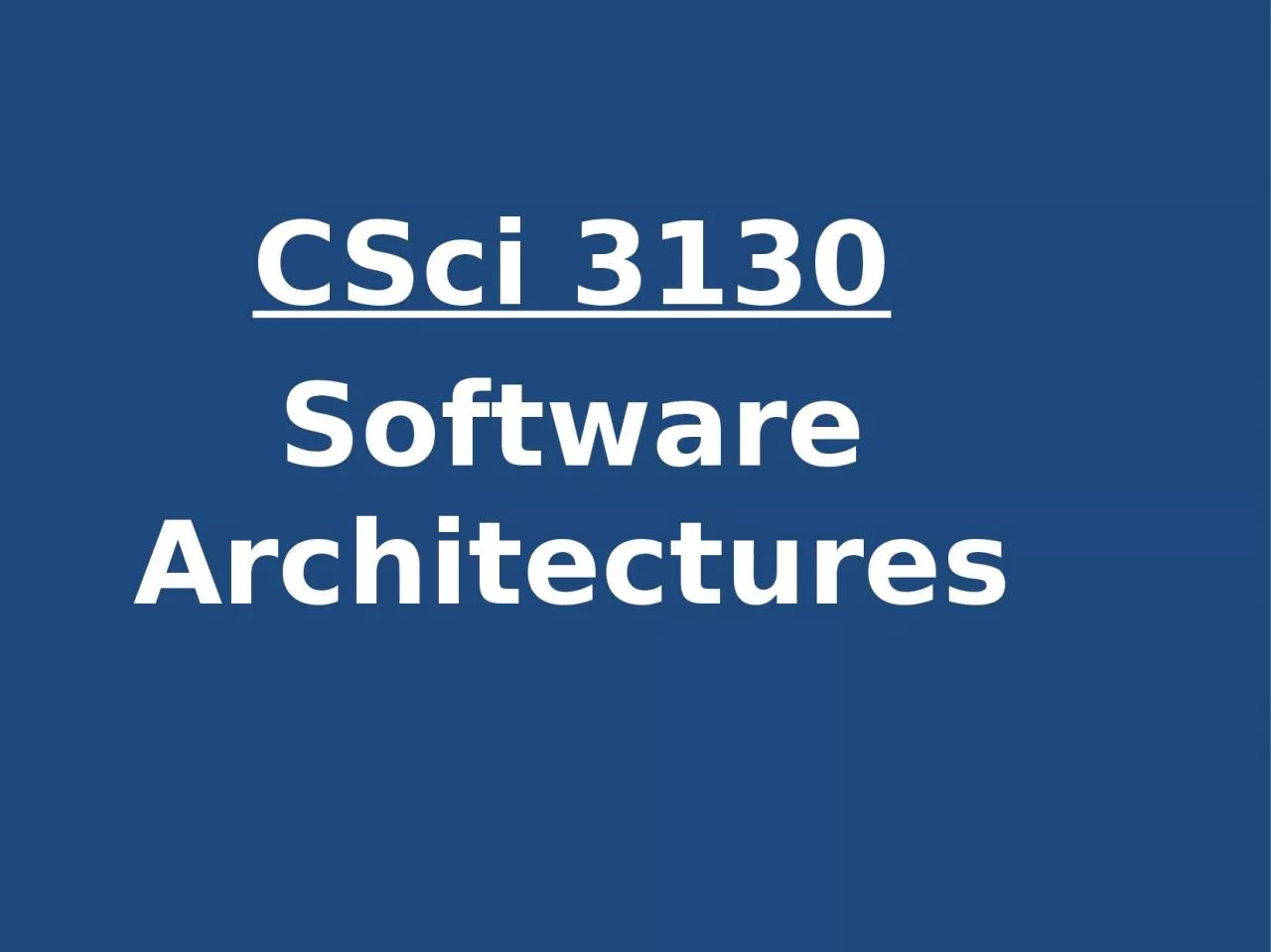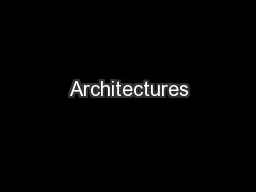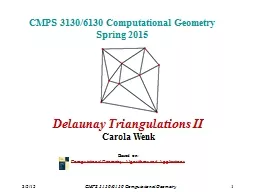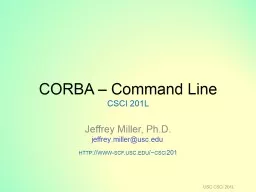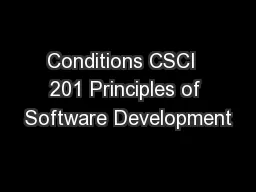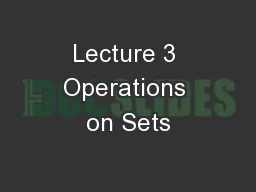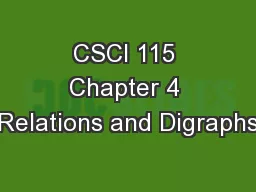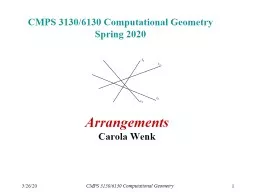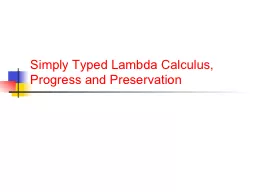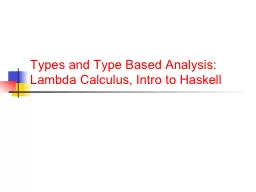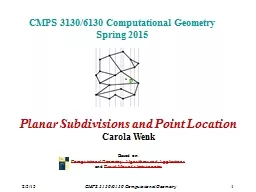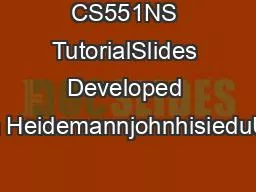PPT-CSci 3130 Software Architectures
Author : priscilla | Published Date : 2023-06-21
Software Architecture What is a Software Architecture The description of the structure of a software system which is composed of software elements their externally
Presentation Embed Code
Download Presentation
Download Presentation The PPT/PDF document "CSci 3130 Software Architectures" is the property of its rightful owner. Permission is granted to download and print the materials on this website for personal, non-commercial use only, and to display it on your personal computer provided you do not modify the materials and that you retain all copyright notices contained in the materials. By downloading content from our website, you accept the terms of this agreement.
CSci 3130 Software Architectures: Transcript
Software Architecture What is a Software Architecture The description of the structure of a software system which is composed of software elements their externally visible properties and their relationships to each other. . 8. Sorting. 1. CSCI 3333 Data Structures. Outline. Basic definitions. Sorting algorithms. Bubble sort. Insertion sort. Selection sort. Quick sort. Shell sort. Merge sort. Example programs. CSCI 3333 Data Structures. Software Architecture. Describe how the various software components are to be organized and how they should interact.. It describe the organization and interaction of software components.. System Architecture. CMPS 3130/6130 Computational Geometry. 1. CMPS 3130/6130 Computational Geometry. Spring . 2017. Triangulations and. Guarding Art Galleries. Carola Wenk. 1/26/17. CMPS 3130/6130 Computational Geometry. CMPS 3130/6130 Computational Geometry. 1. CMPS 3130/6130 Computational Geometry. Spring . 2017. Delaunay Triangulations II. Carola. . Wenk. Based on:. Computational Geometry: Algorithms and . Applications. Jeffrey Miller, Ph.D.. http://www-scf.usc.edu/~csci201. USC CSCI 201L. Outline. USC CSCI 201L. 2. /25. CORBA. Program. CORBA Overview. The Common Object Request Broker Architecture (CORBA) is the Object Management Group’s (OMG) open, vendor-independent architecture and infrastructure that computer applications use to work together over networks. Jeffrey Miller, Ph.D.. jeffrey.miller@usc.edu. Outline. Conditions. Program. USC CSCI 201L. Conditional Statements. Java has three conditional statements, similar to C . if-else. switch-case. Conditional ternary operator . CSCI – 1900 Mathematics for Computer Science. Fall . 2014. Bill Pine. . CSCI 1900. Lecture 3 - . 2. Lecture Introduction. Reading. Rosen – Section 2.2. Basic set operations. Union, Intersection, Complement, Symmetric Difference. CSCI 115. §4. .1. Product Sets and Partitions. §4. .1 – Product Sets and Partitions. Product Set. Ordered pair. Cartesian Product. Theorem 4.1.1. For any 2 finite non-empty sets A and B, . |A x B| = |A||B|. 1. CMPS 3130/6130 Computational Geometry. Spring 2020. Arrangements. Carola . Wenk. Arrangement of Lines. Let . be a set of . lines in . . Then . . is. called the . arrangement . of . . It is defined as the planar subdivision induced by. Announcements. HW3 due today. HW5 is out and due on Tuesday after the break. Spring 20 CSCI 4450/6450, A . Milanova. 2. Outline. P. ure lambda calculus. . (catch up). Syntax and semantics. Free and bound variables. Lambda Calculus, Intro to Haskell. Announcements. Grades in Rainbow . Grades coming soon. Quizzes 1. -3. Homework 1-2. HW3 due on Thursday. HW5 will be out Thursday. Quiz 3. Spring . 20. . CSCI 4450/6450, A . 1. CMPS 3130/6130 Computational Geometry. Spring 2015. Planar Subdivisions and Point Location. Carola. . Wenk. Based on:. Computational Geometry: Algorithms and . Applications. and . David Mount’s lecture notes. 1 Computer Communications - CSCI 551 Copyright William C Chengsimple modela discrete event simulator2ns-2 the network simulator Computer Communications - CSCI 551 Copyright William C Chengwired wire Exam 2 in one week. Practice tests on . Submitty. Review and practice on Friday. Programming Languages CSCI 4430, A. Milanova. 1. Lambda Calculus. Lecture Outline. Quiz 6. Lambda calculus. Reduction strategies (catch-up).
Download Document
Here is the link to download the presentation.
"CSci 3130 Software Architectures"The content belongs to its owner. You may download and print it for personal use, without modification, and keep all copyright notices. By downloading, you agree to these terms.
Related Documents

